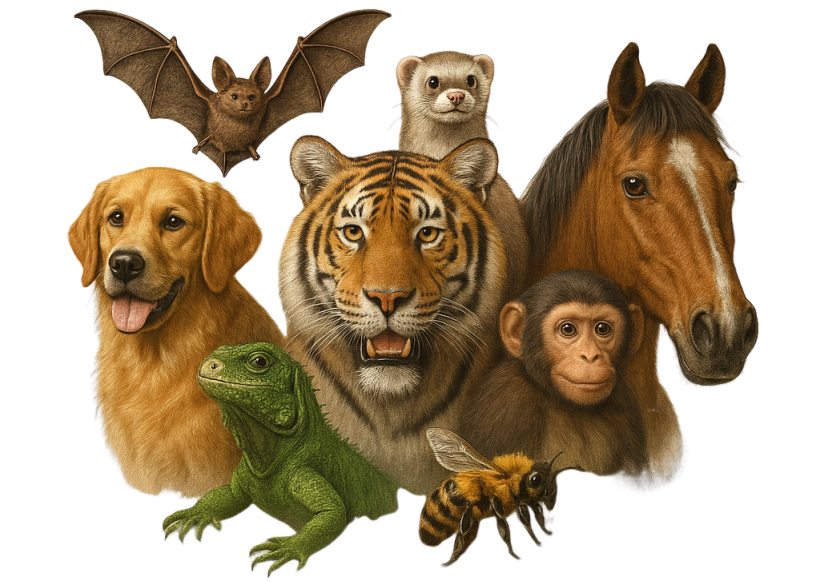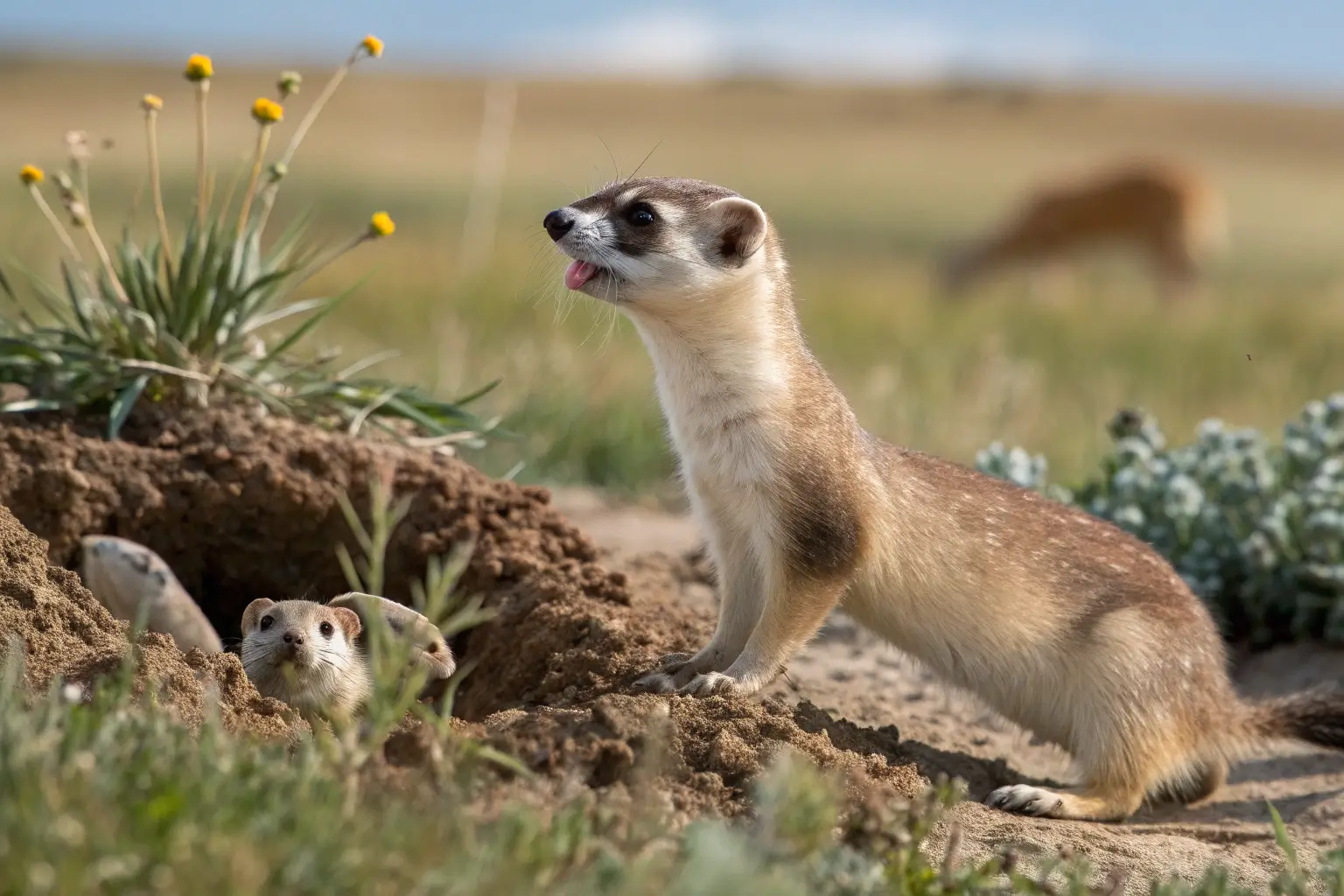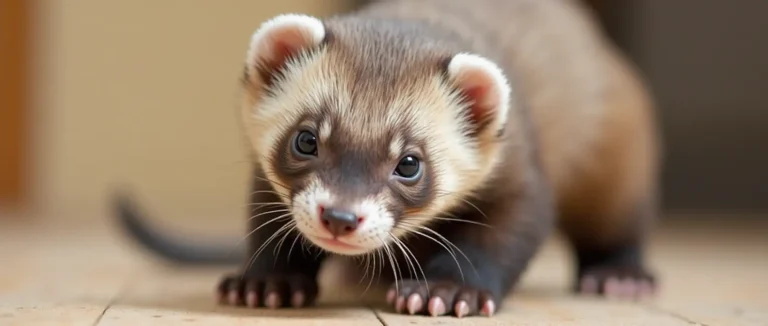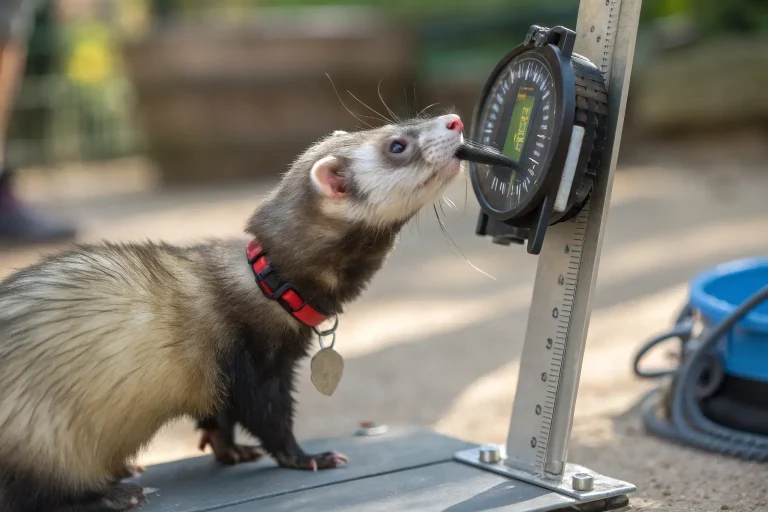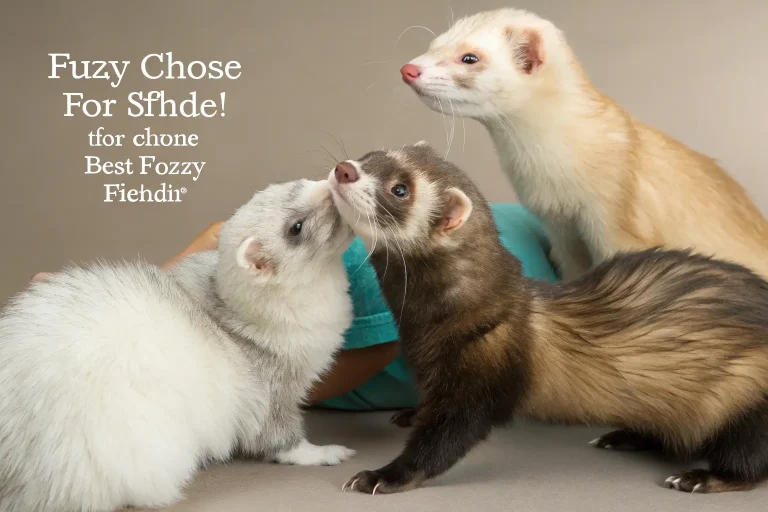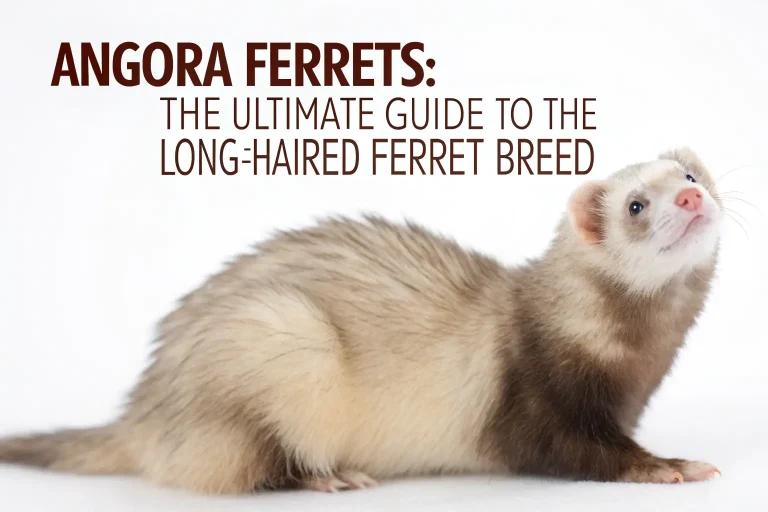Is a Black-Footed Ferret Producer, Consumer, or Decomposer? 3 Roles Explained!
Introduction
The black-footed ferret, with its distinctive masked face and slender body, represents an extraordinary conservation story that teeters between tragedy and triumph. When investigating whether a black-footed ferret is producer, consumer, or decomposer, we enter into the fascinating world of ecological relationships that define prairie ecosystems.
Once thought extinct, these nocturnal predators were rediscovered in 1981 in Wyoming, sparking one of North America’s most ambitious wildlife recovery programs. Understanding their ecological classification isn’t merely an academic exercise – it’s fundamental to comprehending why these animals matter so profoundly to their native grassland habitats.
Did you know that a single black-footed ferret can consume over 100 prairie dogs annually? This staggering statistic hints at their ecological role and importance in controlling prey populations – a clue to answering our central question about whether a black-footed ferret is producer, consumer, or decomposer in its ecosystem.
Species Overview
Scientific Name: Mustela nigripes
Physical Characteristics: The black-footed ferret is a medium-sized mustelid, measuring 18-24 inches (45-60 cm) in length, including their tail, and weighing approximately 1.5-2.5 pounds (680-1130 g). Their distinctive appearance includes a tan body with black legs and feet (hence their name), a black-tipped tail, and a characteristic “bandit mask” facial pattern. Their slender, tubular body shape allows them to navigate prairie dog burrows with remarkable agility.
Taxonomic Classification:
- Kingdom: Animalia
- Phylum: Chordata
- Class: Mammalia
- Order: Carnivora
- Family: Mustelidae
- Genus: Mustela
- Species: M. nigripes
The black-footed ferret is the only ferret species native to North America. Unlike the domesticated ferrets (Mustela putorius furo) kept as pets, black-footed ferrets are wild animals with specific adaptations for their prairie habitat and hunting lifestyle. Their close relatives include weasels, minks, and European polecats.
Habitat and Distribution
Natural Habitat: Black-footed ferrets are specialized inhabitants of shortgrass and mixed-grass prairie ecosystems. Their existence is intimately tied to prairie dog colonies, which provide both shelter and food. These ferrets utilize prairie dog burrows for denning, raising young, and protection from predators and harsh weather conditions.
Geographic Range: Historically, black-footed ferrets ranged throughout the Great Plains from southern Canada to northern Mexico. Their distribution closely mirrored that of prairie dogs, covering approximately 100 million acres across 12 U.S. states, parts of Canada, and Mexico. Today, due to massive habitat loss and prairie dog eradication programs, wild populations exist only in reintroduction sites across Wyoming, South Dakota, Montana, Arizona, Colorado, Utah, Kansas, New Mexico, and elsewhere through ongoing recovery efforts.
Adaptations: Black-footed ferrets possess remarkable adaptations for their specialized lifestyle:
- Exceptional night vision for nocturnal hunting
- Acute hearing that allows them to detect prey movements underground
- Sharp claws and teeth for catching and dispatching prairie dogs
- Slender bodies perfectly shaped for navigating underground tunnel systems
- Seasonal fur changes that provide camouflage in their grassland habitat
- Specialized metabolism that allows them to survive in extreme prairie temperatures
These adaptations have evolved specifically for their role in the prairie ecosystem, which leads us toward understanding if a black-footed ferret is producer, consumer, or decomposer.
Diet and Feeding Habits
What It Eats: Black-footed ferrets are highly specialized predators with a diet consisting primarily of prairie dogs (approximately 90% of their diet). A single ferret can consume 100-150 prairie dogs annually. They occasionally supplement their diet with small rodents, rabbits, birds, and reptiles, particularly when prairie dog populations are low.
Hunting Behavior: These skilled hunters are primarily nocturnal, conducting most hunting activities between dusk and dawn. Their hunting strategy involves:
- Stalking prey within prairie dog colonies
- Entering burrows to surprise sleeping prairie dogs
- Delivering a precise bite to the neck or throat
- Sometimes caching excess food for later consumption
Dietary Needs: As strict carnivores, black-footed ferrets require high protein intake to sustain their active metabolism. Their specialized diet reflects their position in the food chain and provides important clues when examining whether a black-footed ferret is producer, consumer, or decomposer within its ecosystem.
Their hunting efficiency makes them effective controllers of prairie dog populations, preventing overgrazing in native grasslands while simultaneously depending on healthy prairie dog colonies for their survival – a fascinating ecological dependency.
Is a Black-Footed Ferret Producer, Consumer, or Decomposer?
To answer the central question – is a black-footed ferret producer, consumer, or decomposer – we need to understand these ecological classifications:
Producers: Organisms that create their own food through photosynthesis or chemosynthesis. Examples include plants, algae, and some bacteria.
Consumers: Organisms that obtain energy by feeding on other organisms. They include:
- Primary consumers (herbivores): eat plants
- Secondary consumers (carnivores): eat herbivores
- Tertiary consumers (top predators): eat other carnivores
Decomposers: Organisms that break down dead organic matter, returning nutrients to the ecosystem. Examples include fungi, bacteria, and some invertebrates.
The Black-Footed Ferret’s Role: Black-footed ferrets are definitively classified as consumers, specifically secondary consumers. They obtain their energy by consuming primary consumers (prairie dogs, which eat plants). Occasionally, they may function as tertiary consumers when they eat other small predators.
As carnivores near the top of their food chain, black-footed ferrets play a crucial role in regulating prey populations and maintaining ecological balance. They are not producers because they cannot create their own food through photosynthesis, and they are not decomposers because they don’t break down dead organic matter into simple compounds.
This classification as a consumer explains their hunting behaviors, dietary specialization, and importance in energy transfer through the prairie ecosystem.
Behavior and Social Structure
Social Behavior: Unlike many mustelids, black-footed ferrets are primarily solitary animals, coming together only during the breeding season. Each adult maintains a territory ranging from 40-160 acres, often overlapping with multiple prairie dog colonies. Males typically have larger territories that may overlap with several females’ ranges.
Communication: Despite their solitary nature, black-footed ferrets have developed various communication methods:
- Vocalizations: Chatter, hiss, and bark during confrontations; whimper and chuckle during mating
- Scent marking: Using anal gland secretions to delineate territories
- Body language: Arched backs, bared teeth, and upright tails signal aggression
Mating and Reproduction: Their reproductive cycle includes:
- Breeding season: March to April
- Gestation period: 41-43 days
- Litter size: 3-5 kits on average
- Birthing den: Usually a prairie dog burrow
- Kit development: Born blind and helpless, eyes open at 35 days, weaned by 90 days
- Independent life: Young disperse at 5-6 months old
- Lifespan: 3-4 years in the wild, up to 8 years in captivity
Females raise kits alone without male assistance, teaching hunting skills before the young disperse to establish their own territories. This solitary lifestyle reinforces their role as consumers in the prairie ecosystem.
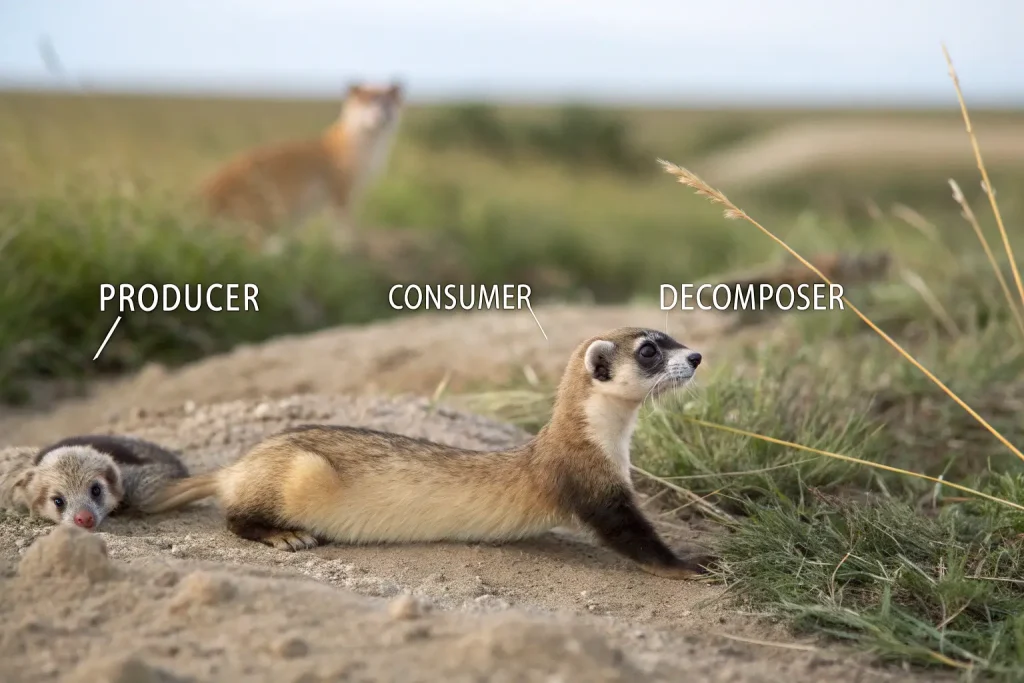
Conservation Status
Endangerment Level: The black-footed ferret is classified as “Endangered” on the IUCN Red List. In 1987, they were among the most endangered mammals in North America, with only 18 remaining individuals taken into captivity for a breeding program.
Threats: Several factors have contributed to their decline:
- Prairie dog eradication programs (90% decline in prairie dog habitat)
- Agricultural conversion of native prairie
- Sylvatic plague and canine distemper (diseases)
- Habitat fragmentation
- Limited genetic diversity due to population bottleneck
Conservation Efforts: Remarkable recovery initiatives include:
- Captive breeding programs across six facilities
- Strategic reintroductions across 29 sites in 8 states, Canada, and Mexico
- Vaccination programs against sylvatic plague
- Habitat protection and prairie dog colony management
- Genetic research to maintain diversity
- Public education campaigns
Today, approximately 300-400 black-footed ferrets live in the wild, with several hundred more in captive breeding programs. This represents one of North America’s most intensive endangered species recovery efforts. Understanding that a black-footed ferret is a consumer helps conservationists manage their habitat appropriately, ensuring prairie dog populations can support these specialized predators.
Interesting Facts
Extinction and Rediscovery: Black-footed ferrets were declared extinct twice! After being thought extinct in the 1950s, a small population was discovered in South Dakota in 1964, only to disappear again. In 1981, a ranch dog in Wyoming brought home a dead ferret, leading to the discovery of the last wild population.
All Modern Ferrets Come From 7 Ancestors: All black-footed ferrets alive today descend from just seven individuals, creating significant genetic challenges for conservation.
Remarkable Night Vision: Their large eyes provide vision six times more sensitive than human night vision, allowing them to hunt effectively in near-total darkness.
Specialized Hunters: Their bodies are so adapted to hunting prairie dogs that they can fit perfectly into burrows, with specialized techniques for hunting in confined underground spaces.
Marathon Sleepers: Black-footed ferrets can sleep up to 21 hours per day, conserving energy for their intense hunting activities.
Cultural Significance: Several Native American tribes, including the Sioux and Cheyenne, incorporated ferrets into their traditions, considering them symbols of bravery and resourcefulness.
Genome Breakthrough: In 2020, scientists successfully cloned a black-footed ferret named Elizabeth Ann from DNA frozen 30 years ago, potentially introducing important genetic diversity to the species.
Black-Footed Ferrets and Human Interaction
Historical Relationship: Native Americans recognized black-footed ferrets long before European settlement, with some tribes considering encounters with these elusive predators as spiritually significant. When European settlers expanded westward, ferrets were initially ignored until widespread prairie dog eradication programs began in the early 1900s. Government-sponsored poisoning campaigns targeted prairie dogs as agricultural pests, inadvertently decimating ferret populations by eliminating their primary food source.
Captive Breeding Success: The modern relationship between humans and black-footed ferrets centers on conservation. The National Black-footed Ferret Conservation Center in Colorado leads breeding efforts that have produced over 8,000 kits since the program’s inception. The center’s work involves:
- Artificial insemination to increase genetic diversity
- “Preconditioning” captive-born ferrets to develop wild survival skills
- Research into disease resistance and habitat requirements
- Cryopreservation of genetic material for future generations
Public Awareness and Engagement: Conservation organizations have developed programs allowing the public to “adopt” a ferret or sponsor reintroduction efforts. Some recovery sites offer limited opportunities for public viewing of wild ferrets through spotlighting tours, helping to build support for conservation while maintaining safe distances from these endangered animals.
Understanding that a black-footed ferret is a consumer helps inform public education about their ecological importance and the need to protect both the predator and its prey.
Role in the Ecosystem
Ecological Importance: As specialized predators (consumers) of prairie dogs, black-footed ferrets serve as natural population regulators. This role is crucial because:
- They help prevent prairie dog overpopulation, which could lead to overgrazing
- Their predation pressure encourages prairie dog vigilance behaviors, creating more dynamic ecosystem interactions
- Their abandoned dens provide habitat for other species
- They contribute to maintaining biodiversity in grassland ecosystems
Keystone Species Relationship: While prairie dogs are considered keystone species (those having disproportionate effects on their environment), black-footed ferrets act as specialized regulators of these keystone species. This relationship demonstrates the complex interdependencies in healthy prairie ecosystems where the answer to “is a black-footed ferret producer, consumer, or decomposer” has significant implications.
Impact of Decline: The near-extinction of black-footed ferrets illustrated how removing a consumer from an ecosystem can create imbalances:
- Unchecked prairie dog populations in some areas led to overgrazing
- Predation pressure shifted to other species as alternative predators filled vacant niches
- Energy flow through the food web was altered
Their reintroduction helps restore natural ecological functions and contributes to more resilient prairie landscapes. As climate change and habitat fragmentation continue to threaten grassland ecosystems, the role of specialized native predators becomes increasingly important for maintaining ecological integrity.
Trophic Interactions and Energy Flow
Energy Pyramid Position: Within the prairie ecosystem’s energy pyramid, black-footed ferrets occupy the third trophic level as secondary consumers. This hierarchy follows:
- Primary Producers: Grasses and forbs that convert solar energy to chemical energy through photosynthesis
- Primary Consumers: Prairie dogs and other herbivores that eat the plants
- Secondary Consumers: Black-footed ferrets that eat prairie dogs
- Tertiary Consumers: Larger predators like coyotes or birds of prey that occasionally prey on ferrets
This positioning definitively answers whether a black-footed ferret is producer, consumer, or decomposer – they are consumers, specifically secondary consumers.
Energy Transfer Efficiency: Following ecological principles, only about 10% of energy transfers between trophic levels. This explains why:
- Ferrets need to consume many prairie dogs annually
- Ferret populations are naturally smaller than prairie dog colonies
- Large territories are required to sustain individual ferrets
Cascading Effects: As specialized predators, black-footed ferrets create trophic cascades – indirect effects that ripple through the food web:
- Their predation influences prairie dog behavior and distribution
- This affects vegetation patterns as prairie dog grazing changes
- Vegetation changes impact insect communities and soil composition
- These shifts influence other wildlife from grassland birds to pollinators
By understanding these complex interactions and the ferret’s role as a consumer, conservation biologists can better predict ecosystem responses to management actions and reintroductions.
Conclusion
After examining the ecological roles within prairie ecosystems, we can conclusively answer our central question: a black-footed ferret is a consumer, specifically a secondary consumer in the prairie food web. This classification explains their specialized hunting behaviors, carnivorous diet, and their crucial role in regulating prairie dog populations.
The story of black-footed ferrets represents both a cautionary tale about ecosystem disruption and an inspiring example of conservation success. Their near-extinction demonstrated how removing specialized consumers from an ecosystem creates ripple effects throughout the food web. Conversely, their ongoing recovery shows that with dedicated effort, even species on the brink can be brought back.
Understanding the black-footed ferret’s role as a consumer helps inform conservation strategies that recognize the importance of maintaining not just the species itself, but the entire ecological community they inhabit. Their specialized relationship with prairie dogs exemplifies the interconnectedness of species within functional ecosystems.
As conservation efforts continue, each reintroduced ferret represents not only a victory for this endangered species but also a step toward restoring the ecological integrity of North America’s grasslands. By preserving black-footed ferrets, we help maintain the delicate balance of producers, consumers, and decomposers that collectively create resilient, functioning ecosystems.
Frequently Asked Questions
Are black-footed ferrets producers, consumers, or decomposers?
Black-footed ferrets are definitively consumers. Specifically, they are secondary consumers (carnivores) that primarily eat prairie dogs, which are primary consumers (herbivores). This places them at the third trophic level in the ecosystem’s energy pyramid.
What do black-footed ferrets eat in the wild?
Black-footed ferrets have a highly specialized diet consisting of approximately 90% prairie dogs. A single ferret can consume 100-150 prairie dogs annually. They occasionally supplement their diet with other small mammals, birds, and reptiles when necessary.
Can black-footed ferrets be kept as pets?
No, black-footed ferrets cannot be kept as pets. They are endangered, federally protected wildlife. All black-footed ferrets are managed under conservation programs, and it is illegal to capture or keep them. Domestic ferrets (a different species) are common pets but require specialized care.
How many black-footed ferrets are left in the world?
Current estimates suggest approximately 300-400 black-footed ferrets live in the wild across reintroduction sites, with several hundred more in captive breeding programs. All descend from just seven founder animals discovered in 1981, though genetic diversity has been enhanced through careful breeding programs.
What is being done to save black-footed ferrets?
Conservation efforts include captive breeding programs, reintroductions to suitable habitat, prairie dog colony protection, disease management through vaccinations, genetic research, and public education campaigns. These combined approaches have brought the species back from the brink of extinction.
How do black-footed ferrets impact their ecosystem?
As specialized predators, black-footed ferrets regulate prairie dog populations, preventing overgrazing and maintaining grassland health. Their presence creates behavioral changes in prey species, influences vegetation patterns, and contributes to biodiversity. This impact exemplifies their role as consumers in the ecosystem.
Why are black-footed ferrets endangered?
Black-footed ferrets became endangered primarily due to massive prairie dog eradication programs that eliminated their food source, habitat conversion to agriculture, diseases like sylvatic plague and canine distemper, and habitat fragmentation. Their specialized lifestyle made them particularly vulnerable to these threats.
How can I help black-footed ferret conservation?
You can support conservation by donating to organizations like the Black-footed Ferret Recovery Program, advocating for prairie protection, participating in citizen science projects that monitor prairie ecosystems, and educating others about the importance of these native predators as consumers in their natural habitats.
